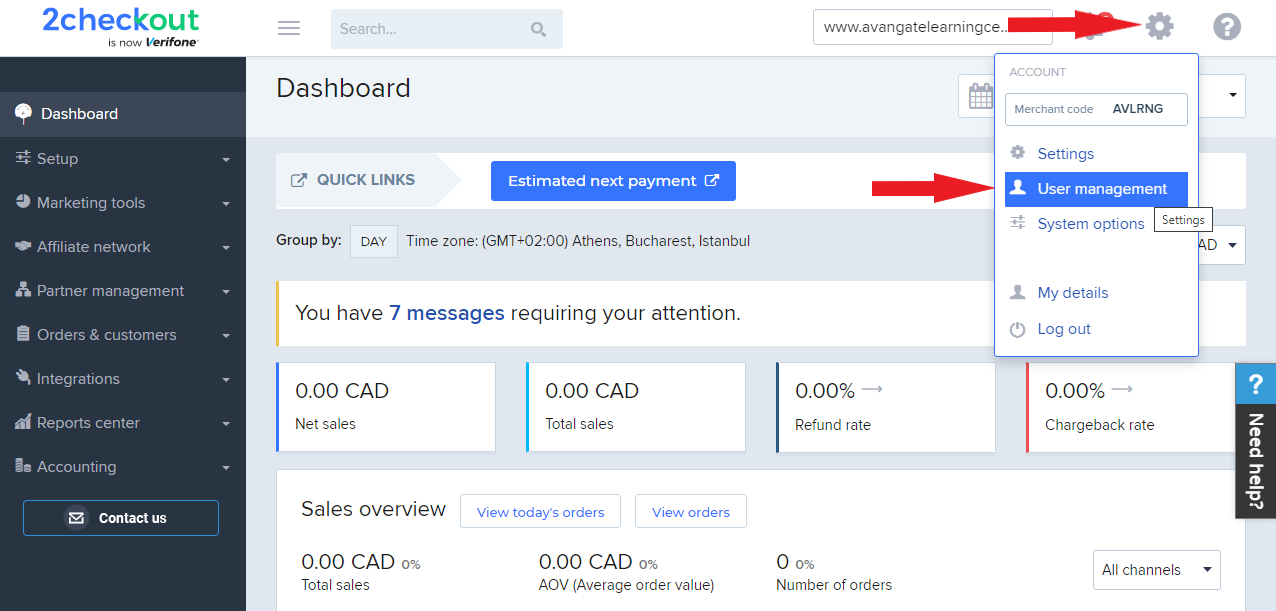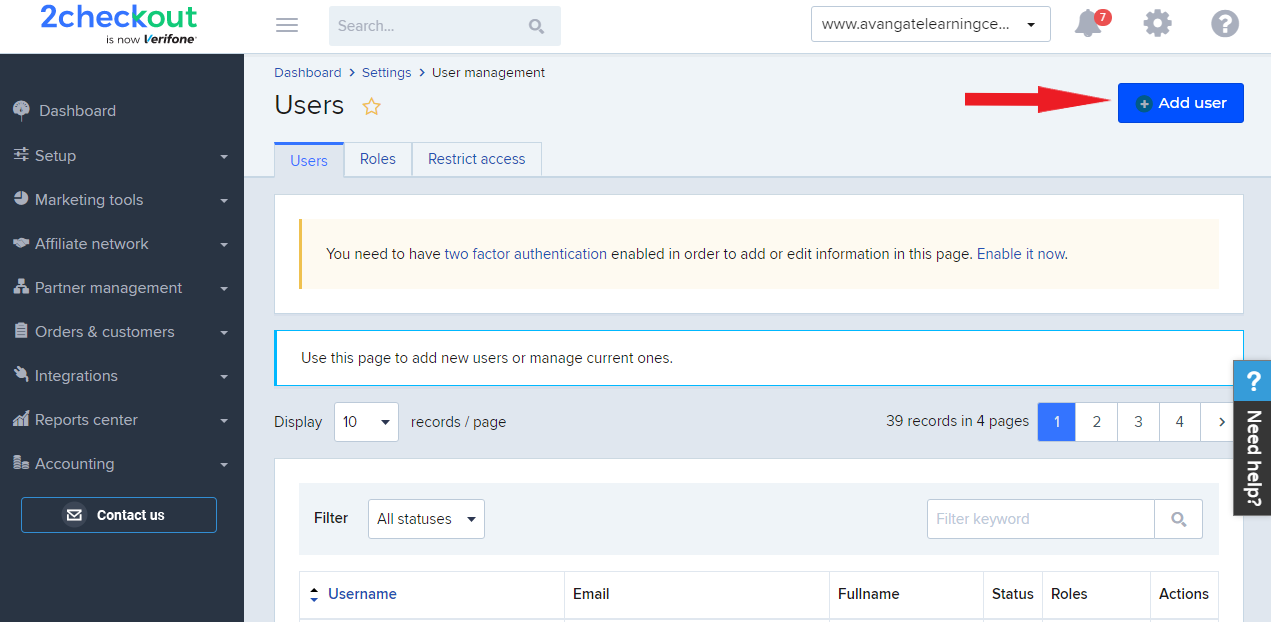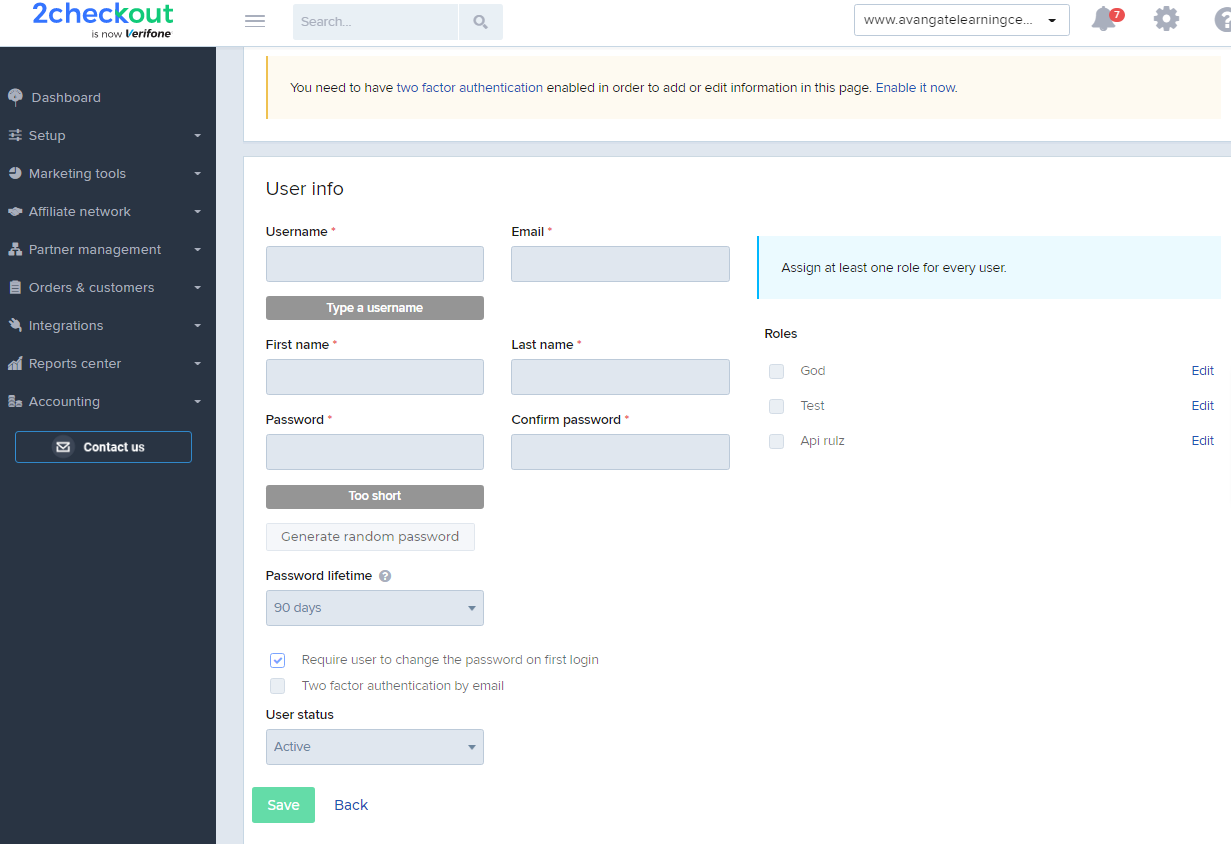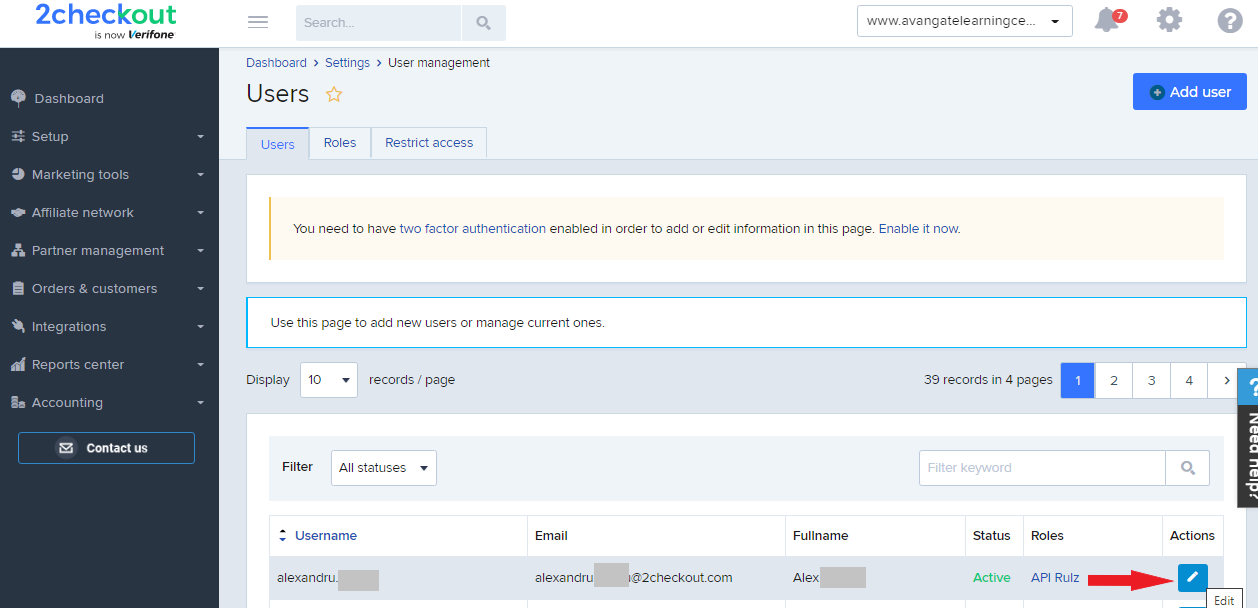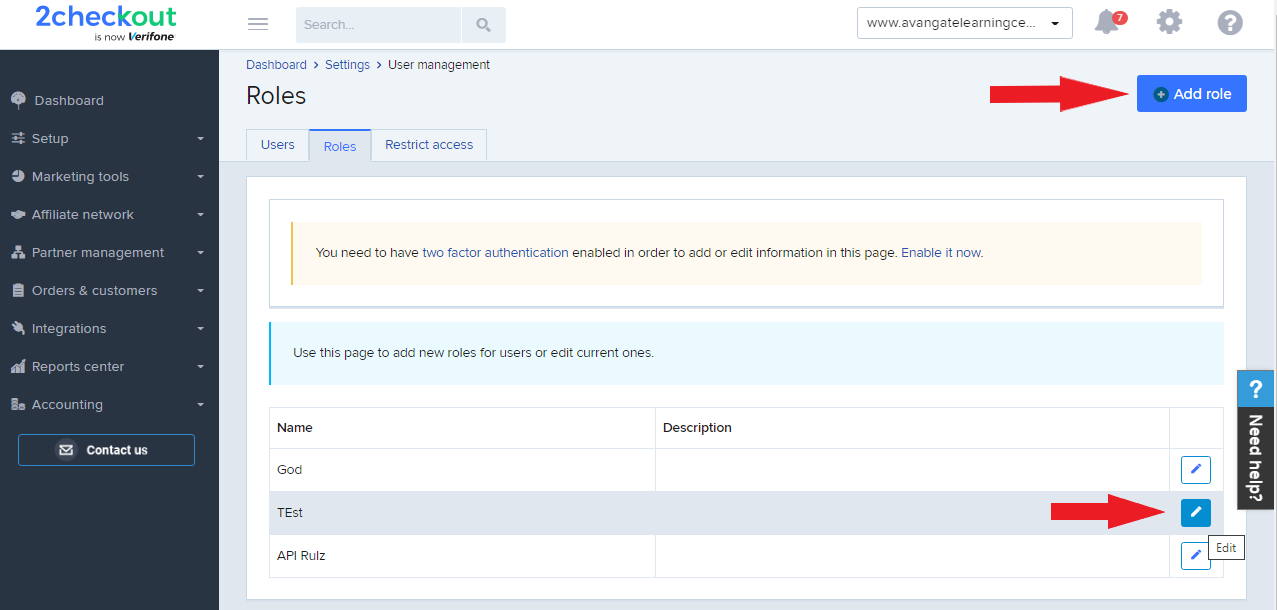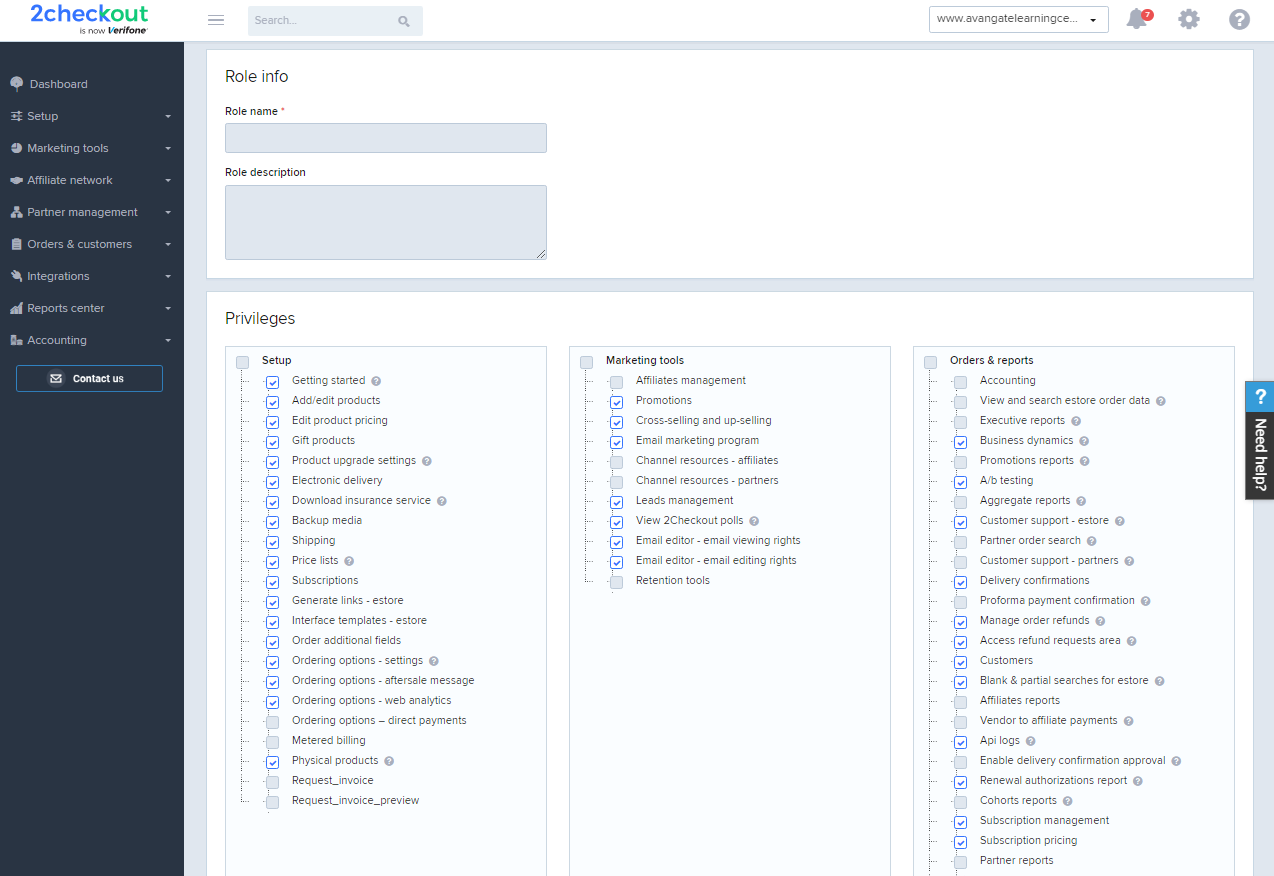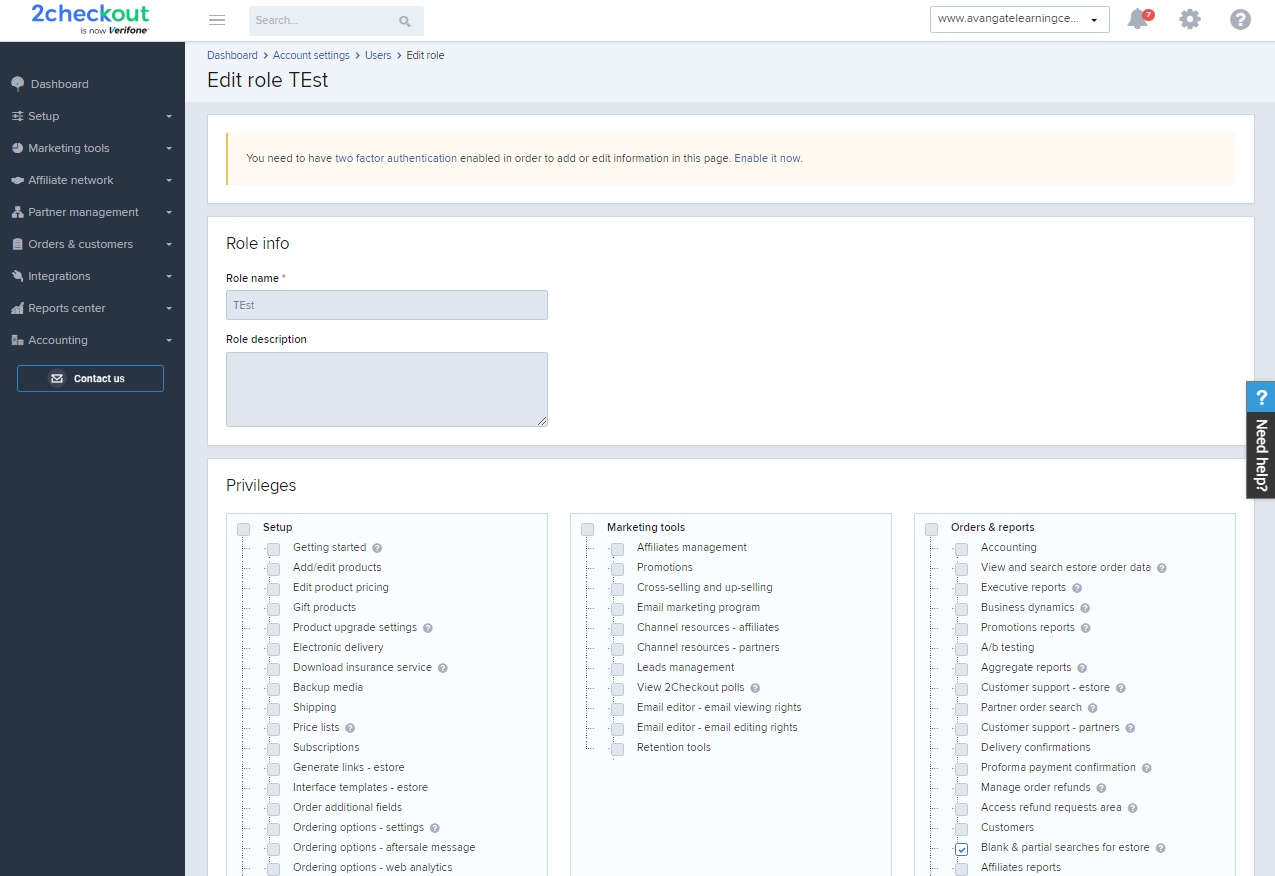Subscription import
Overview
Add/import subscriptions in the Avangate system. Include card data with your subscription import only if you contacted Avangate to enable this functionality for your account. Otherwise, the import process results in a failure. Contact Avangate or your account manager directly for more details.
Attributes
| Parameters | Type/Description | |||
|---|---|---|---|---|
|
ExternalSubscriptionReference |
Required (string) |
|||
|
|
Unique identifier for your subscription. Mandatory when importing subscription data. |
|||
|
StartDate |
Required (string) |
|||
|
|
Subscription start date(YYYY-MM-DD) - StartDate is mandatory when importing subscription data. If you changed the time zone for the Avangate API by editing system settings under Account settings, then the StartDate you provide must be in accordance with your custom configuration. |
|||
|
ExpirationDate |
Required (string) |
|||
|
|
Subscription expiration date(YYYY-MM-DD) - ExpirationDate is mandatory when importing subscription data. If you changed the time zone for the Avangate API by editing system settings under Account settings, then the ExpirationDate you provide must be in accordance with your custom configuration. |
|||
|
Product |
Required (object) |
|||
|
|
The product for which Avangate generated the subscription. Details below. |
|||
|
|
ProductCode |
String |
||
|
|
|
Unique product identifier that you control. |
||
|
|
ProductId |
Int |
||
|
|
|
Unique, system-generated product identifier. |
||
|
|
ProductName |
String |
||
|
|
|
Product name. |
||
|
|
ProductQuantity |
Int |
||
|
|
|
Ordered number of units. |
||
|
|
ProductVersion |
String |
||
|
|
|
Product version. |
||
|
|
PriceOptionCodes |
Array |
||
|
|
|
The product options codes the customer selected when acquiring the subscription. Pricing options codes are case sensitive. |
||
|
EndUser |
Required (object) |
|||
|
|
The end user of the subscription. Details below. |
|||
|
|
Person |
Object |
||
| Details below. | ||||
|
|
|
FirstName |
String |
|
|
|
|
|
End user's first name |
|
|
|
|
LastName |
String |
|
|
|
|
|
End user's last name |
|
|
|
|
CountryCode |
String |
|
|
|
|
|
End user country code [ISO3166-1 Alpha 2]. |
|
|
|
|
State |
String |
|
|
|
|
|
End user state. |
|
|
|
|
City |
String |
|
|
|
|
|
End user city. |
|
|
|
|
Address1 |
String |
|
|
|
|
|
End user first address line. |
|
|
|
|
Address2 |
String |
|
|
|
|
|
End user second address line. |
|
|
|
|
Zip |
String |
|
|
|
|
|
End user zip code. |
|
|
|
|
|
String |
|
|
|
|
|
End user email address. |
|
|
|
|
Phone |
String |
|
|
|
|
|
End user phone number. |
|
|
|
|
Company |
String |
|
|
|
|
|
Company name. |
|
|
|
Fax |
String |
||
|
|
|
End user fax. |
||
|
|
Language |
String |
||
|
|
|
Language [ISO639-2] the Avangate system uses for communications. |
||
|
DeliveryInfo |
Optional (object) |
|||
|
|
The object contains information about the delivery/fulfillment made to the customer. |
|||
|
|
Description |
String |
||
|
|
|
Delivery description. |
||
|
|
Codes |
Array of objects |
||
| Details below. | ||||
|
|
|
Code |
String |
|
|
|
|
|
Delivered activation key/code. |
|
|
|
|
Description |
String |
|
|
|
|
|
Code description for dynamic lists from your key generator. |
|
|
|
|
ExtraInfo |
Object |
|
|
|
|
|
Info set by your key generator for dynamic lists only. |
|
|
|
|
|
CodeExtraInfo |
Object |
|
|
|
|
Type |
String |
|
|
|
|
Label |
String |
|
|
|
|
Value |
String |
|
|
|
File |
Array of objects |
|
| Details below. | ||||
|
|
|
|
Content |
String |
|
|
|
|
|
Content of the file (base64 encoded). |
|
|
|
|
ContentLength |
Int |
|
|
|
|
|
File size. |
|
|
|
|
Filename |
String |
|
|
|
|
|
The name of the delivered file. |
|
|
|
|
FileType |
String |
|
|
|
|
|
The type of the delivered file. |
|
PartnerCode |
Optional (string) |
|||
|
|
|
|||
|
ExternalCustomerReference |
Optional (string) |
|||
|
|
Customer identifier you control. |
|||
|
SubscriptionValue |
Optional (double) |
|||
|
|
Subscription value. The total costs incurred by the customer through the lifecycle of the subscription before you imported the item into the Avangate system. When you send this parameter you must accompany it by ValueCurrency. |
|||
|
SubscriptionValueCurrency |
Optional (string) |
|||
|
|
Mandatory when you also send the Value parameter. The currency associated to the subscription value. |
|||
|
AdditionalInfo |
Optional (string) |
|||
|
|
Extra information that you can attach to a subscription, such as the source of the initial purchase. |
|||
|
NextRenewalPrice |
Optional (double) |
|||
|
|
The future costs that subscribers would incur when their subscriptions are renewed. When provided, you must accompany it by NextRenewalPriceCurrency and CustomPriceBillingCyclesLeft. |
|||
|
NextRenewalPriceCurrency |
Optional (string) |
|||
|
|
Mandatory when you send CustomPriceBillingCyclesLeft. The currency associated with the subscription next renewal price value. |
|||
|
CustomPriceBillingCyclesLeft |
Optional (string) |
|||
|
|
Mandatory when you send NextRenewalPrice. Avangate applies the next renewal price to the number of billing cycles you define. |
|||
| Test | Optional (integer) | |||
| Available only for eStore subscriptions. Use 1 to import a test subscription. Exclude the parameter or set the value to 0 to import regular subscriptions. Test subscriptions enable you to try out flows like manual and auto renewal, and upgrade. | ||||
|
CardPayment |
Optional (object) |
|||
|
|
Include payment (credit/debit card) information that Avangate uses for recurring billing to renew imported subscriptions. Importing subscriptions with payment data is available only to eligible Avangate accounts. Contact Avangate directly for additional details. |
|||
Card payment
Add credit/debit card details when importing subscriptions. Avangate uses payment information in the recurring billing process.
For imports of test subscriptions, use the credit card information from this article.
| Parameters | Type/Description |
|---|---|
|
CardPayment |
Object |
|
CardNumber |
Required (string) |
|
|
The credit/debit card number. |
|
CardType |
Required (string) |
|
|
VISA, VISAELECTRON, MASTERCARD, MAESTRO, AMEX, DISCOVER, DANKORT, CARTEBLEUE, JCB. |
|
ExpirationYear |
Required (string) |
|
|
The year in which the card expires. |
|
ExpirationMonth |
Required (string) |
|
|
The month in which the card expires. |
|
HolderName |
Required (string) |
|
|
Card holder name. |
|
CCID |
Required (string) |
|
|
Credit Card Identification - an extra ID printed on the card, usually a 3-4 digit number, the CVC2/CVV2. |
|
HolderNameTime |
Required (int) |
|
|
The interval of time in seconds in which shoppers enter their name in the HolderName field. An abnormally short interval is usually a red flag for fraud attempts. |
|
AutoRenewal |
Optional (bool) |
|
|
True or false, depending on whether the customer or you enabled or disabled subscription auto-renewals. |
|
CardNumberTime |
Optional (int) |
|
|
The interval of time in seconds in which shopper enter their card number in the CardNumber field. An abnormally short interval is usually a red flag for fraud attempts. Can be NULL, but not a negative number. |

